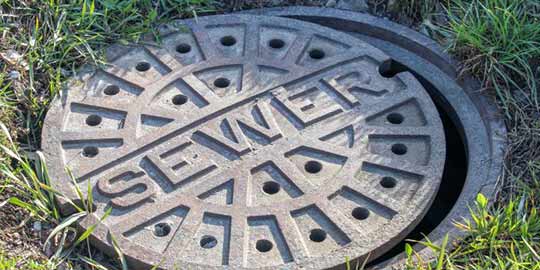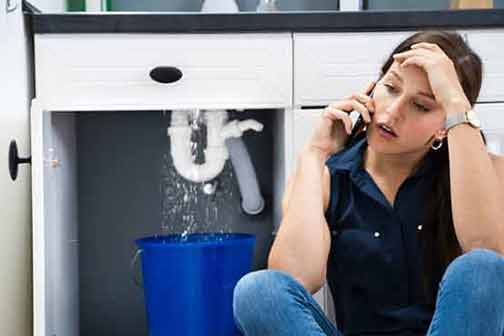
Your home’s sewer line is designed to collect wastewater and sewage from the home’s drains and transport them to the city sewer line in the street. But sometimes, the opposite happens, and the contents of your sewer line travel in the reverse direction inside the plumbing system.
When this happens, it is known as a sewer backflow.
A sewer backflow is one of the worst drainage problems you can have in your home according to Crown, a commercial cleaning company in Colorado Springs. When it happens, the wastewater inside the sewer line can reenter your home’s water supply and contaminate it. A sewer backflow can also result in the contamination of water reservoirs.
Depending on how it occurs, a sewer backflow may cause dramatic changes in your water supply. For instance, water from the faucet can acquire a strange color. Other times, the changes are so subtle that there is no visible change in your home’s water supply.
The first kind of sewer backflow will usually leave a huge mess as contaminated water flows into your home. But the worst damage is done by the second type of sewer backflow because – being unaware of the problem – you may continue to use the contaminated water.
What causes sewer backflow, and what are the best strategies to prevent this problem?
Common causes of sewer backflow
There are two major ways that a sewer backflow happens:
- Back-pressure backflow
- Back-siphonage backflow
Back-pressure backflow
Back-pressure backflow is when excessive wastewater pressure forces the contents of a sewer line to flow backward. In back-pressure backflow, the wastewater is pressed backward. Events that can cause back-pressure backflow include:
Blocked sewer lines
If a sewer line is blocked, maybe due to buildup, tree root intrusion or belly of a segment of the line, it can result in sewer backflow.
Heavy rainfall and flooding
Sewer lines can be overwhelmed with excessive runoff during periods of very heavy rainfall. That will cause the sewer line to backflow.
Problems in the city sewer system
Blockages and overflows in municipal sewer lines may ripple backwards into your home’s sewer line, causing the sewer to backflow.
Wrong installation
Incorrect installation of the sewer system in your home can make the line susceptible to sewer backflow.
Back-Siphonage backflow
Back-siphonage backflow happens when a vacuum is created inside your home’s freshwater supply line. This low pressure forces the wastewater inside the sewer line to be SUCKED backwards into the freshwater line. Events that can cause this problem include:
Excessive use of water
Incidents that remove a lot of water from the water supply system very quickly, such as firefighters using a hydrant, can cause sewer backflow.
Broken water main
If the main water line in your home breaks, the sudden fall in water pressure inside the pipes can also cause sewer backflow.
How to prevent sewer backflow in your home
Proper installation and maintenance of the home’s plumbing is your first defense against sewer backflow. The right combination of pipe sizes and pipe placements will help to keep upstream water supply pressure higher than downstream water removal pressure at all times.
Also, when installing pressure-producing fixtures like boilers and elevated water tanks, it is vital to ensure it is done in a way that does not cause imbalances in water pressure. If you have these fixtures in your home, you may need a professional plumber to inspect your plumbing.
But even with a perfectly designed plumbing system, you can still have sewer backflows in your home. That is because outside forces may interfere with the plumbing system and cause it to malfunction. You can stop this by installing a backflow prevention device in your home.
Backflow prevention devices force the water inside your pipes to flow in a single direction. There are different types of backflow prevention devices:
Hose bib backflow preventer
This is a spring-controlled seal suitable for protecting a single faucet. It is affordable and small enough to not prevent normal use of the faucet.
Pressure-type vacuum breaker
This device constantly monitors water pressure inside your pipes and will close the valve if it senses a pressure drop that can result in backflow.
Other backflow prevention devices
Other systems for preventing sewer backflow include Barometric loops, Air gaps and Atmospheric Vacuum Breakers.
Backwater alarm
A backwater alarm doesn’t prevent backflow. It alerts you when a backflow is happening, so you don’t use the fixture. This device is a must-have for homes in flood-prone areas.
To sum up, the best way to combat sewer backflow in your home is through a comprehensive long-term strategy that successfully combines properly installed and well-maintained plumbing systems with effective backflow prevention devices in the house.
To design this strategy, you need the help of a professional backflow prevention service. A competent backflow prevention service will assess your home’s plumbing for potential backflow issues, recommend the best solutions and work with you to ensure the success of those measures.



